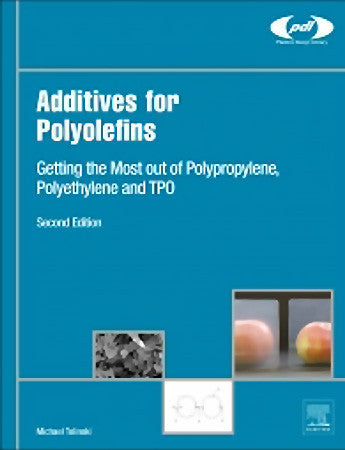With major sections for each additive function, this book provides a highly practical guide for engineers and scientists creating and using polyolefin compounds, who will find in this book a wealth of detail and practical guidance. This unique resource will enable them to make practical decisions about the use of the various additives, fillers, and reinforcements specific to this family of materials.
Audience:
Molders and extruders (business managers) who want to know how additives can be used to cut costs or expand markets. Compounders who need a quick-reference guide that covers additive types outside of their range of expertise. Material-selection engineers and designers who need a sense of what properties are offered among a sometimes confusing collection of additives, filler, and reinforcements. Sales personnel who need to know the basics of the materials/products they sell. Laboratory characterization technologists who need to understand the components of the plastics they analyze. Compounding or other technicians who want to advance their careers by gaining a better understanding of what materials they're handling. Researchers and students that need an overview of polyolefin additives that stays within the context of the end-use of these plastics. Purchasing agents who need to understand key terms behind the materials they purchase.
Key Features
- Structured to make it easy for the reader to find solutions for specific property requirements
- Contains a number of short case studies about companies that have used or developed a particular additive to achieve the desired result
- Covers environmental resistance, mechanical property enhancement, appearance enhancement, processing aids, and other modifications of form and function
1 Introduction
2 Trends in polyolefin & additive use
SECTION II: ENVIRONMENTAL RESISTANCE
3 Antioxidants and heat stabilization
4 Ultraviolet light protection & stabilization
5 Flame-retarding additives
6 Additives for modifying electrical properties
SECTION III: MECHANICAL PROPERTY ENHANCEMENT
7 Overview of fillers & fibers
8 Factors determining selection of fillers and fibers
SECTION IV: APPEARANCE ENHANCEMENT
9 Colorants
10 Nucleation and clarity
SECTION V: PROCESSING AIDS
11 Processing aids for molding
12 Processing aids for extrusion
SECTION VI: OTHER MODIFICATIONS OF FORM AND FUNCTION
13 Reducing density: Polyolefin foams
14 Coupling, compatibilizing, recycling, and biodegradability
15 Cross-linking
16 Sterilization & radiation resistance
17 Aesthetics enhancement and surface modification
SECTION VII: CONCLUSION: INCORPORATING ADDITIVES
18 Adding Additives to resin
References
Index




